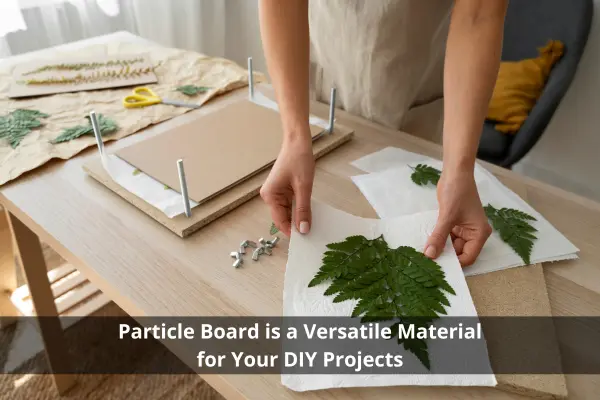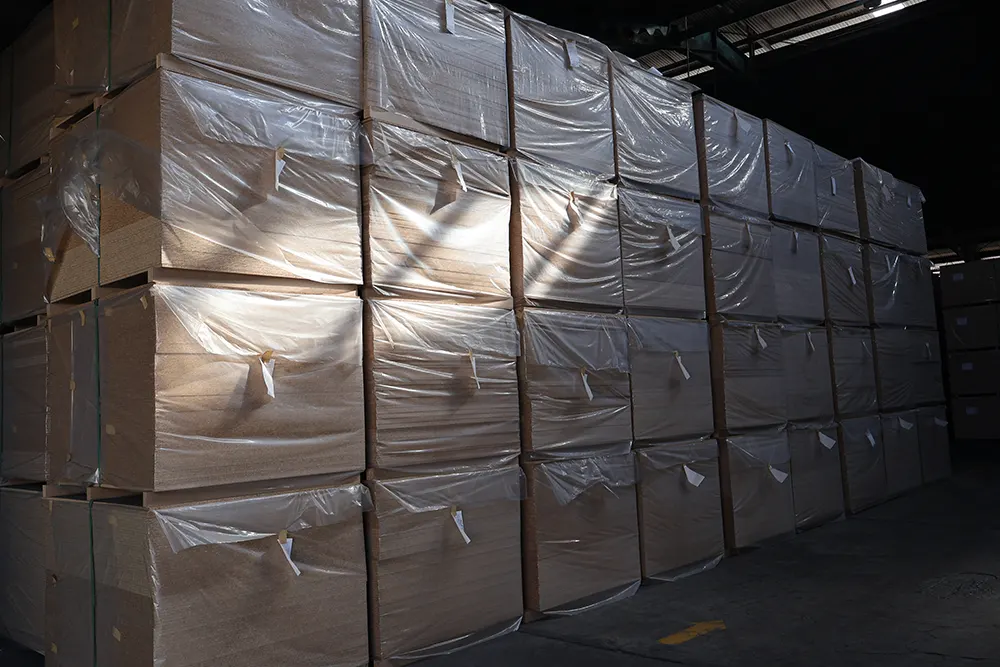
Particle board is a material increasingly popular among DIY (Do It Yourself) enthusiasts. Made from wood shavings or chips mixed with resin and pressed into solid sheets, it’s affordable, lightweight, and flexible for various applications. However, understanding its strengths and weaknesses is key to getting the best results from using it.
In this article, we’ll explore its advantages, practical uses, and tips and tricks to maximize its potential for your DIY projects. With the right information, you can create beautiful, functional, and budget-friendly projects.
What is Particle Board?
Before diving into its uses, let’s first understand what particle board is. It’s a board material made from wood chips mixed with synthetic resin and pressed into thick sheets. This process gives it unique characteristics, distinguishing it from other materials like solid wood, plywood, or MDF (Medium Density Fiberboard).
Key Characteristics of Particle Board:
- Lightweight: Compared to plywood or MDF, particle board is lighter, making it easier to move and work with.
- Affordable: It’s cheaper than solid wood or plywood, perfect for budget-conscious projects.
- Smooth Surface: The resin in it ensures a smooth surface, easy to finish with paint or veneer.
- Eco-Friendly: Made from wood waste, such as chips, it helps reduce the need for raw wood.
Read more: Bahan Partikel Board (Particle Board Material): What Are Its Advantages and Disadvantages?
Why Particle Board is Ideal for DIY Projects
Particle board is a practical choice for DIY projects, especially for those on a budget. To help you decide if it’s suitable for your project, here are some key advantages and disadvantages.
Advantages
- Affordable
One main reason to choose it is the economical price, making it perfect for projects without breaking the bank. - Widely Available
It’s easy to find in many hardware stores or home improvement centers, available as plain sheets or pre-laminated options. - Easy to Paint
The smooth texture allows easy finishing with paint or laminate for an attractive look. - Lightweight and Easy to Move
In DIY projects, ease of handling is crucial. Its lightweight nature makes this process efficient. - Eco-Friendly
It utilizes wood waste, reducing reliance on raw wood and making it an environmentally friendly option.
Disadvantages
- Not Water-Resistant
One major drawback is its vulnerability to water. When exposed to moisture for long periods, it can swell and deteriorate. - Less Strong Than Solid Wood
While strong enough for many applications, it’s not as sturdy as solid wood or plywood. Heavy, prolonged loads can cause warping. - Not Durable in High-Humidity Areas
It’s not ideal for high-humidity spaces, like kitchens or bathrooms, unless it’s coated with protective laminates.
Read more: Particle Board is a Modern Furniture Material: Advantages, Disadvantages, and How to Choose It
Particle Board Price
One main reason people opt for it in DIY projects is the affordable price. If you’re on a budget, this material offers a practical solution without sacrificing functionality or aesthetics. Prices vary depending on thickness, size, and whether the material is pre-laminated or veneered.
Prices can vary depending on location and supplier. Lamination or veneer typically adds to the cost but also protects the surface from moisture and scratches.
Comparison Table: Particle Board vs. Other Materials
Let’s compare it with other materials commonly used in DIY projects, like plywood, MDF, and solid wood:
| Criteria | Particle Board | Plywood | MDF | Solid Wood |
|---|---|---|---|---|
| Price | Affordable | More expensive | Slightly more expensive than PB | Expensive |
| Strength | Medium | Strong | Strong but prone to water damage | Very strong |
| Water Resistance | Prone to water damage | More water-resistant with coating | Not water-resistant | Highly water-resistant |
| Weight | Lightweight | Medium | Heavy | Varies, tends to be heavy |
| Eco-Friendly | Uses wood waste | Uses more raw wood | Uses wood waste | Not always |
Tips and Tricks for DIY Projects
Now that you know the pros and cons, here are some tips and tricks for maximizing it in your DIY projects.
1. Use the Right Cutting Tools
Cutting particle board can be tricky. Since it tends to chip along the edges, use a sharp saw blade designed specifically for this material. To reduce chipping, apply masking tape along the cutting line.
2. Apply a Protective Coating for Water-Prone Areas
If your DIY project involves areas exposed to water (like kitchen counters or bathroom shelves), coat the surface with waterproof laminate or protective paint to prevent swelling.
3. Be Careful When Using Screws
Particle board is vulnerable to screw pressure. Avoid large or long screws, which can damage its internal fibers. Use brackets or dowels to connect pieces securely.
4. Use Veneer or Laminate for Finishing
To create an elegant look, consider adding veneer or laminate. These materials give it a solid wood appearance for a fraction of the cost while protecting the surface from scratches.
5. Get Creative with Colors
One of its best qualities is the smooth surface, which is easy to paint. Experiment with colors that match your room’s theme to create custom shelves, tables, or decor.
Read more: 5 Reasons Why You Should Choose Particle Board for Your Project
DIY Project Ideas
Here are some DIY ideas you can make with particle board:
- Minimalist Bookshelves
It’s perfect for creating minimalist shelves. Use neutral-colored laminates, like white or gray, for a modern look. - Bedside Tables
Make a small bedside table with laminated particle board for a more luxurious appearance. Pair it with metal legs for an industrial style. - Storage Cabinets
Design a functional storage cabinet with it. Adding a wood veneer finish gives it a natural touch. - Headboards
For a creative project, make a headboard for your bed. Paint or upholster the particle board for a stylish finish.
Conclusion
Particle board is a versatile and budget-friendly material for DIY projects. While it has some limitations, such as water sensitivity and lower strength than solid wood, it remains a practical choice when used correctly. By understanding its characteristics, using proper techniques, and applying appropriate finishes, particle board can be a great solution for creating DIY projects that are not only functional but also attractive and eco-friendly.ability to water and heavy loads, it can still be an excellent choice if used correctly. By understanding its characteristics, using the right techniques, and providing appropriate finishing, particle board can be an ideal solution for creating various DIY projects that are beautiful, functional, and budget-friendly.
Follow us on Social Media


